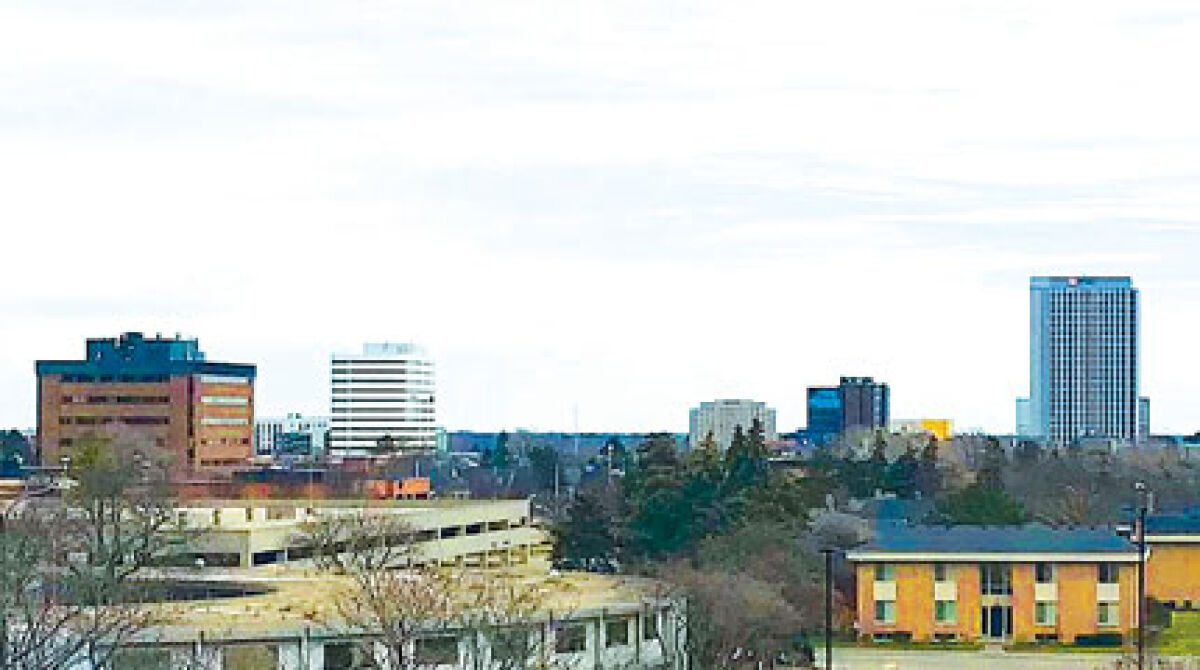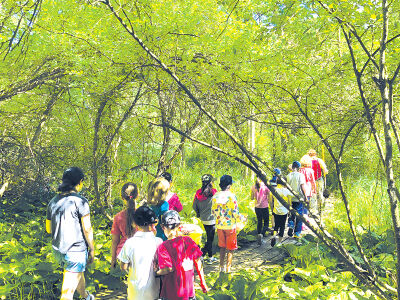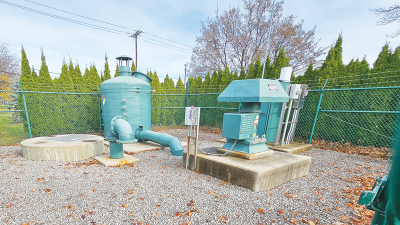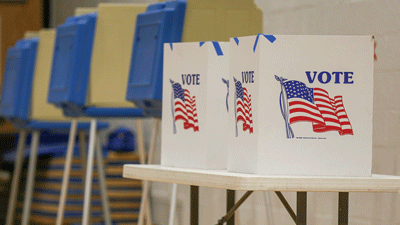
Troy’s updated master plan will focus largely on neighborhood nodes, which considers issues such as walkability and available public spaces.
Photo by Brendan Losinski
TROY — The city of Troy is preparing an update to its master plan, an overarching city planning document sorting out priorities and upcoming projects through 2040.
Every municipality in Michigan is required by law to have a master plan and update it regularly. This new plan is an update to a major plan overhaul that was first drawn up in 2008 to better address the changing needs of Troy.
“In 2008, we completed our first comprehensive master plan in 40 years,” explained City Planner and Community Development Director Brent Savidant. “Prior to that, the master plan efforts were focused on controlling growth. We knew that growth was coming when I-75 was constructed and people were moving here. I started working for Troy in 2002. (City Manager) Mark Miller started a couple years before I did,” said Savidant. “We amended the 2008 master plan … but otherwise found it was in pretty good shape.”
He added that the focus of the master plan is less on major overhauls and more on tweaking specific areas to ensure the city is growing in a positive direction.
“Rather than look at what we didn’t want to see, we wanted to look at things we wanted to see, like mixed-use development and creative in-fill development,” said Savidant. “We took a sort of market-driven approach. We looked at properties in our light industrial district, for instance, where we had a lot of vacant buildings, so instead of allowing only industrial uses, we considered what the market wanted for these properties.”
Troy City Manager Mark Miller said that Troy has had to shift priorities since the building boom in the 1970s and 1980s and that the nature of business and how communities build their economies has shifted.
“I think the master plan is a very good job by the Planning Commission and Planning Department,” he said. “I believe it will keep the city moving forward. Most people don’t realize the city’s development patterns in the ’70s and ’80s focused on office space, and now some are empty. They need redevelopment, and this plan will look at different options for how to use that land and those buildings.
“We recognized back in 2008 that the farmers’ fields that characterized Troy in the olden days are gone,” added Savidant. “All development now is in-fill development. Anything you put in will impact neighbors who are already there. We need to do a good job of reviewing applications and see how they will impact the community.”
One of the major issues discussed in the updated master plan is housing within the city.
“The plan, when we adopted it in 2008, we recognized the need to provide different types of housing opportunities,” said Savidant. “We had sort of a missing middle where we had either single-family detached neighborhoods or high-density apartments. We lacked opportunities in between. We put in a pretty significant housing section in 2008 that we still wanted to address moving forward. There is a housing crisis nationally, and we recognize that.”
Savidant said another major focus of the plan that saw significant updates was the concept of neighborhood nodes.
“The neighborhood nodes concept was our major focus in this new plan. Otherwise, the master plan was in pretty good shape. We had public meetings where we went node-by-node to see if they were still relevant in the last two years. There were updates in the new plan,” he said. “‘Neighborhood nodes’ is a land-use concept that was created in 2008. … The question was, what kind of community do residents want? When we did a visioning process in the early 2000s, it was seen as an opportunity for ‘villaging,’ where people could walk to nearby intersections of community centers. This included some mixed-use zoning and expanded housing opportunities.”
The updated master plan must be approved by Troy’s Planning Commission and City Council before it is officially adopted.
“We (on the City Council) haven’t approved the updated master plan. We approved the 63-day review period,” said Troy Mayor Ethan Baker. “The final plan will still go back to final review and approval before the City Council and Planning Commission. That being said, I applaud the work the planning department has done to address the ongoing concerns regarding development in Troy. I think this master plan is something Troy residents can be proud of and that it gives a good roadmap for continued growth and development in Troy.”
Residents will get a chance to hear details of the master plan and voice their opinions about it at an upcoming Planning Commission meeting.
“There will be a time for public comment at the Planning Commission when they discuss the master plan,” said Baker. “The date has not been scheduled yet. The master plan has a dedicated page on the website where the public can find more information.”
Miller believes the plan leaves the city in a good position moving forward.
“The city is in a great position to be a regional and state leader,” he remarked. “This master plan will help continue that. Residents can rest assured the Planning Commission takes this very seriously.”
He added that this doesn’t mean there aren’t still issues that elected officials need to address moving forward and that should be considered when looking at Troy’s future.
“The Kmart headquarters redevelopment is probably the biggest challenge for Troy (in regard to planning). It’s been sitting there empty since 2004,” he said. “Housing for an aging population and housing affordability are other things we want to keep in mind, as are obsolete office space and business space. Mobility is another issue we want to keep in mind when looking at the future. Trying to preserve natural resources is, of course, something we always want to keep in mind when talking about development.”
 Publication select ▼
Publication select ▼
























